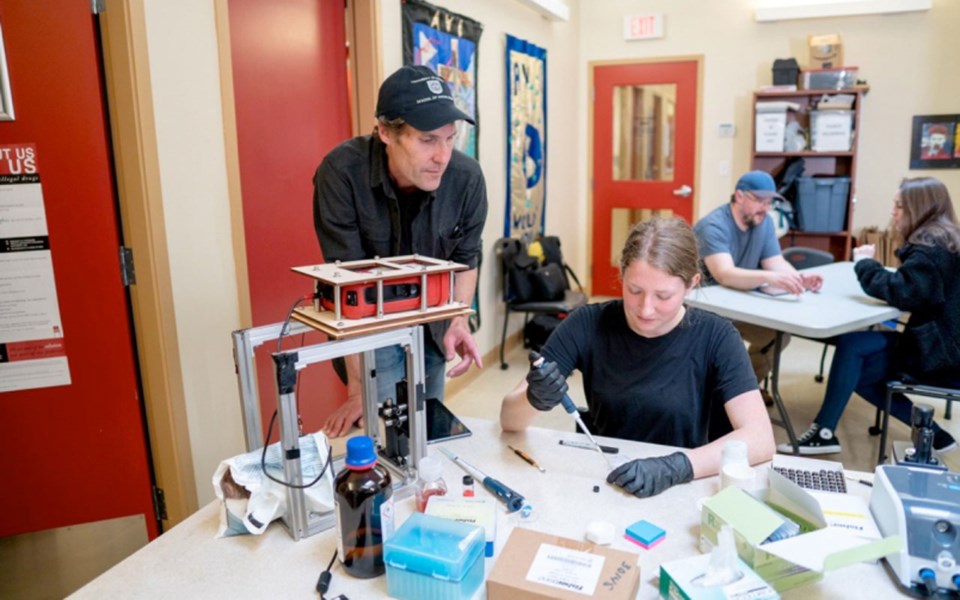The illicit drug supply in Victoria is becoming deadlier due to higher concentrations of fentanyl and the presence of other overdose-causing substances that can’t be reversed using naloxone, according to a drug-checking report and harm reduction workers.
The Vancouver Island Drug Checking Project released a report based on 269 samples that were tested between April 1 and June 30. In 19 per cent of samples expected to be opioids, testing found other active ingredients that would not respond to naloxone in an overdose.
Bruce Wallace, an associate professor of social work at the University of Victoria who co-created the drug checking project, said the finding is alarming, because it means responding to an overdose with naloxone may not revive someone quickly or at all.
“If it’s not working ... it’s obviously a very, very stressful situation already. And then to add that, there might be some other ingredient that we don’t even know and the naloxone is not responding, it’s just going to really add to the [overdose] crisis.”
Harm reduction workers in Victoria say they’re seeing an increase in overdoses on substances that are not opioids. Benzodiazepine, which can be used to treat anxiety, and xylazine, an animal sedative toxic to humans, are among the most common substances.
Corey Ranger, a registered nurse who is co-ordinating a new safe supply project through AIDS Vancouver Island and Solid Outreach, said the substances have been around before, but they are becoming more persistent during the pandemic.
Harm-reduction workers will still administer naloxone to someone who appears to have overdosed, but the overdose-reversing medication is only effective against opioids, because it’s designed to remove opioids from opioid receptors.
“So what happens a lot of times is that people will experience an overdose, and then we use naloxone on them, and they’re just not waking up, and then their breathing isn’t returning to normal. Sometimes it returns a little bit but it’s still in a depressed, irregular state.
“People are getting a lot of doses of naloxone, and that’s likely because not everything that’s in the drug that person took contains just an opioid,” Ranger said.
The longer it takes to revive someone, the greater their chances of brain injury as a result of being without oxygen.
Fred Cameron, operations manager at Solid Outreach, said when people overdose as a result of a mix of opioids and non-opioids they can remain semi-conscious and at risk for hours.
“If somebody doesn’t breathe enough for five minutes, sometimes they come back with requirements of a machine, and they’re essentially brain dead,” Cameron said. “That’s what happens if we intervene too late into an overdose, before they die, but too late to bring them back.”
The drug-checking report also found a wider variation in the concentrations of fentanyl in samples that were expected to be opioids than in previous quarterly reports.
Wallace said the technology is not able to quantify the concentration, but samples tested show greater unpredictability and therefore higher risk for those who use drugs.
“So that’s what can obviously result in an unintended overdose, because the person was predicting that the sample was similar to what might have been safely used in the past, and now it’s not all of a sudden,” Wallace said.
Ranger said the average concentration of fentanyl in the illicit drug supply was about eight per cent before the COVID-19 pandemic, but in recent months some samples have been reported at 24 per cent. “That’s three times more toxic than it was pre-pandemic.”
The COVID-19 pandemic has worsened the overdose crisis—B.C. has reported record numbers of overdoses in May and June—but advocates say the pandemic isn’t the problem. They point to criminalization of substance use, the resulting stigma and a lack of safe supply of opioids as the reason for the rising number of deaths.
“This is all very preventable with an easily accessible safe supply. If we’re able to get drugs that people want out there, they would engage with the system,” Cameron said. If it was possible to regulate the amount of fentanyl that someone is getting in each dose, “the number of overdoses wouldn’t be countable on one hand, I’d assume.”




